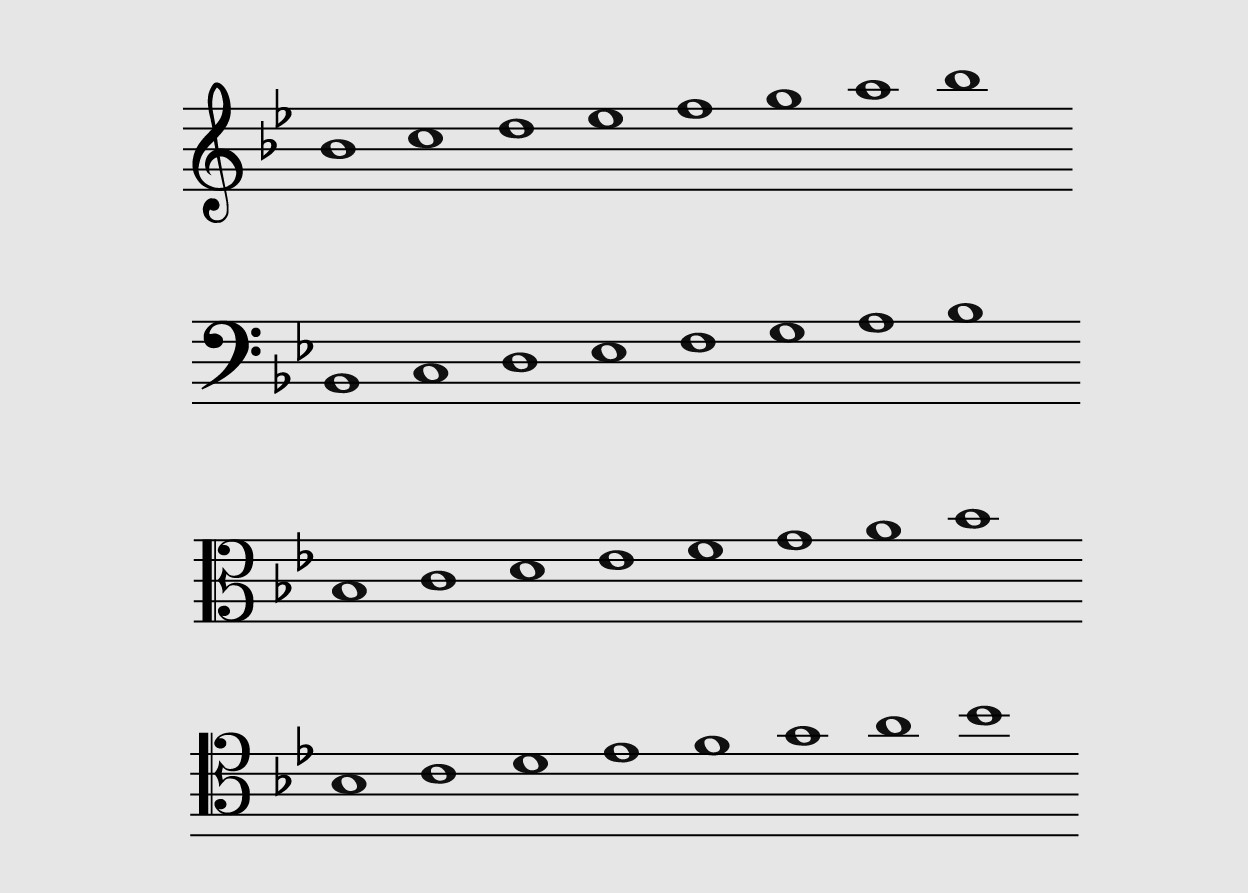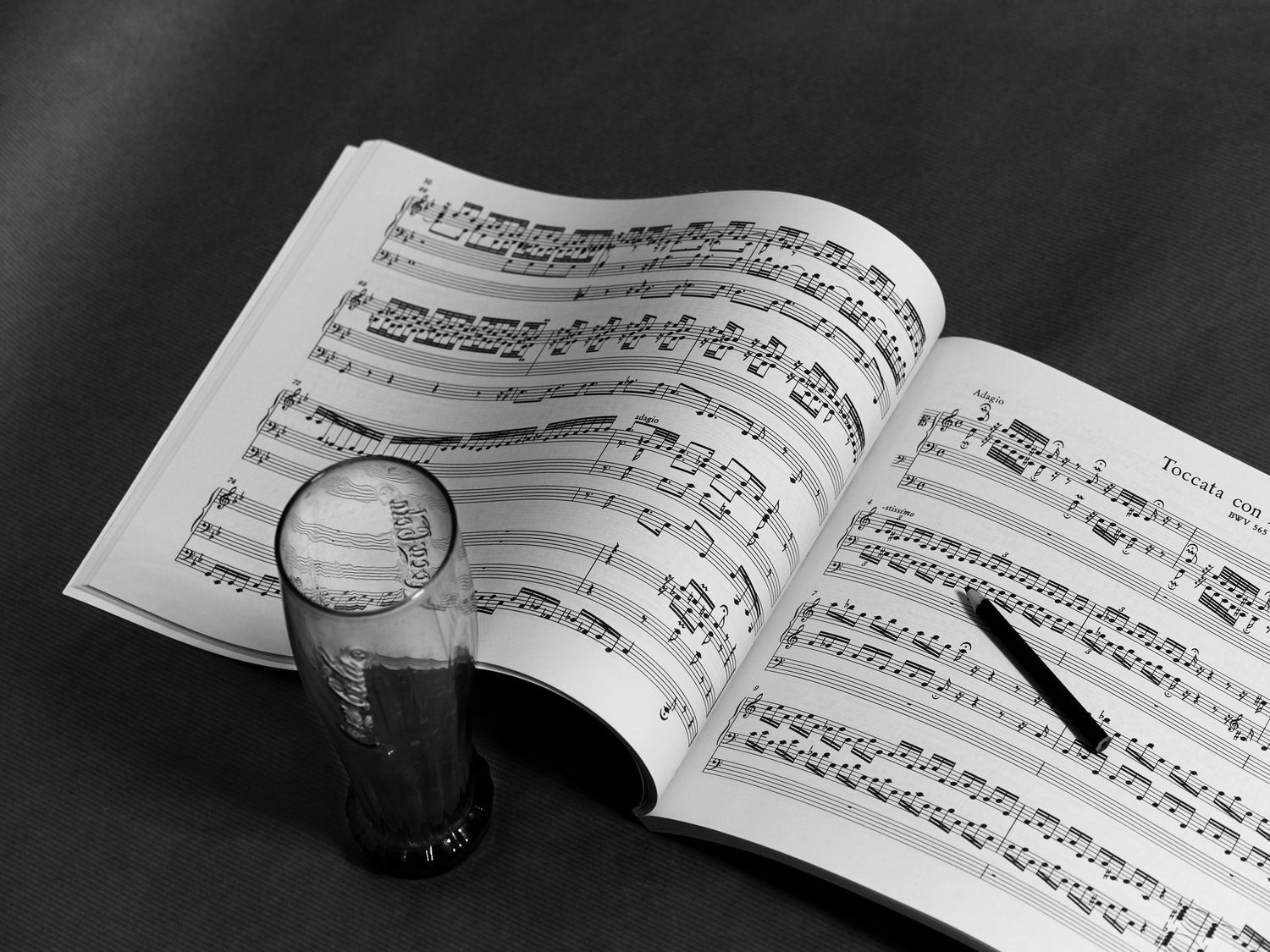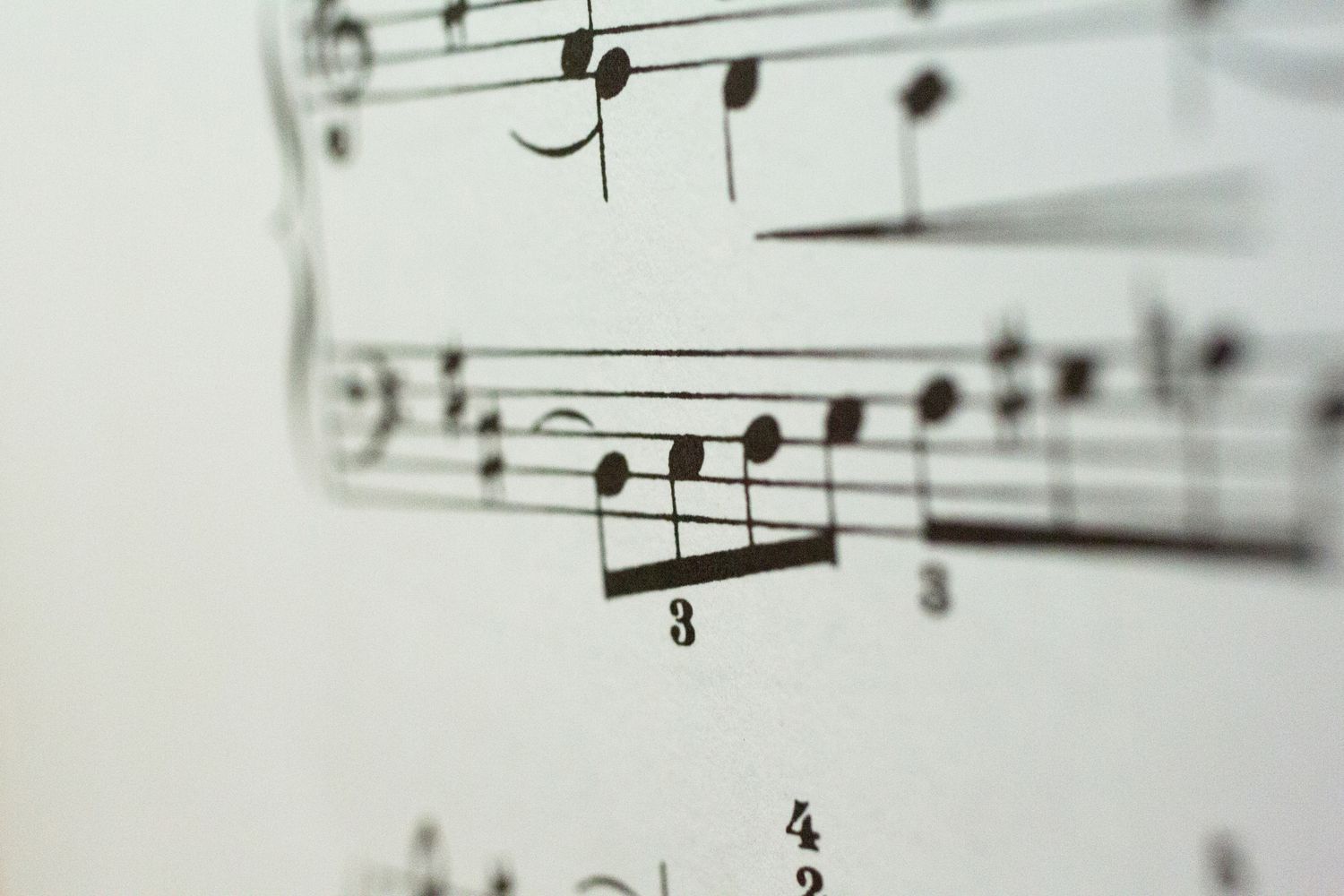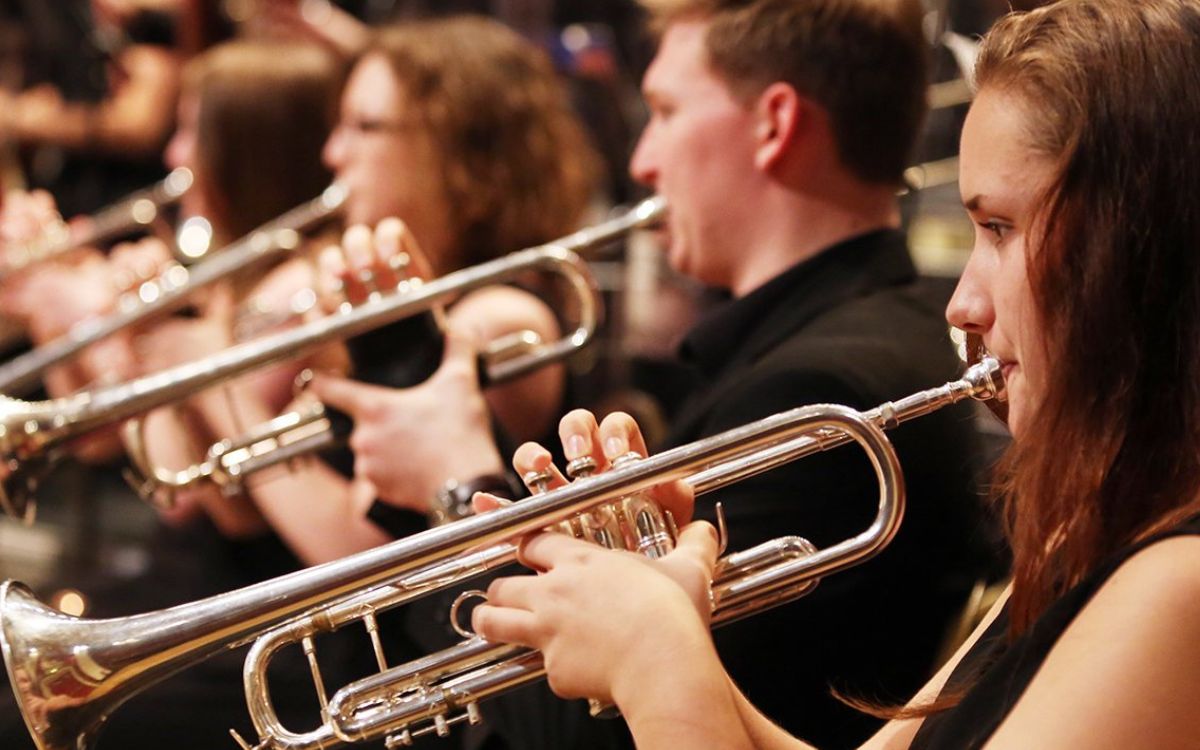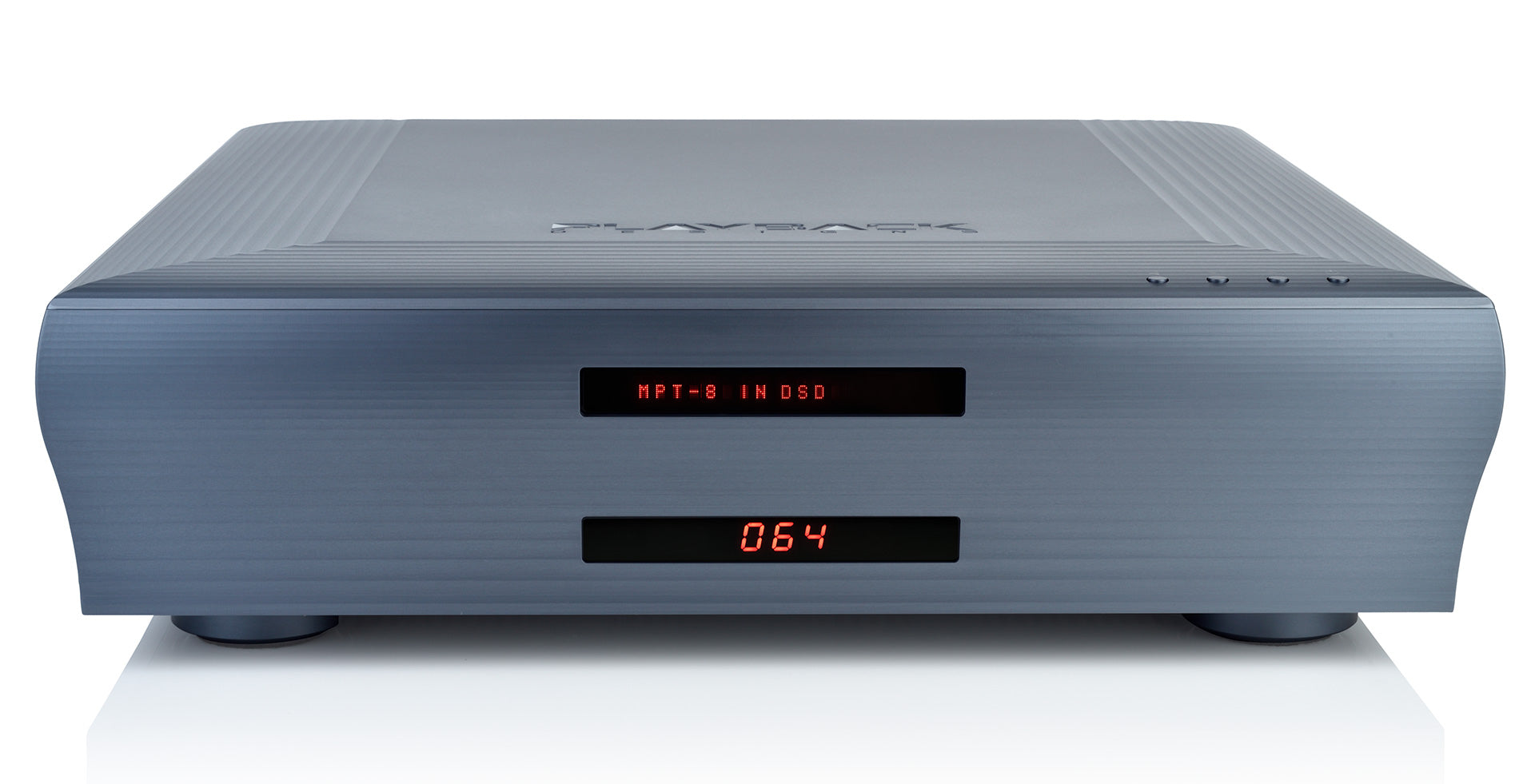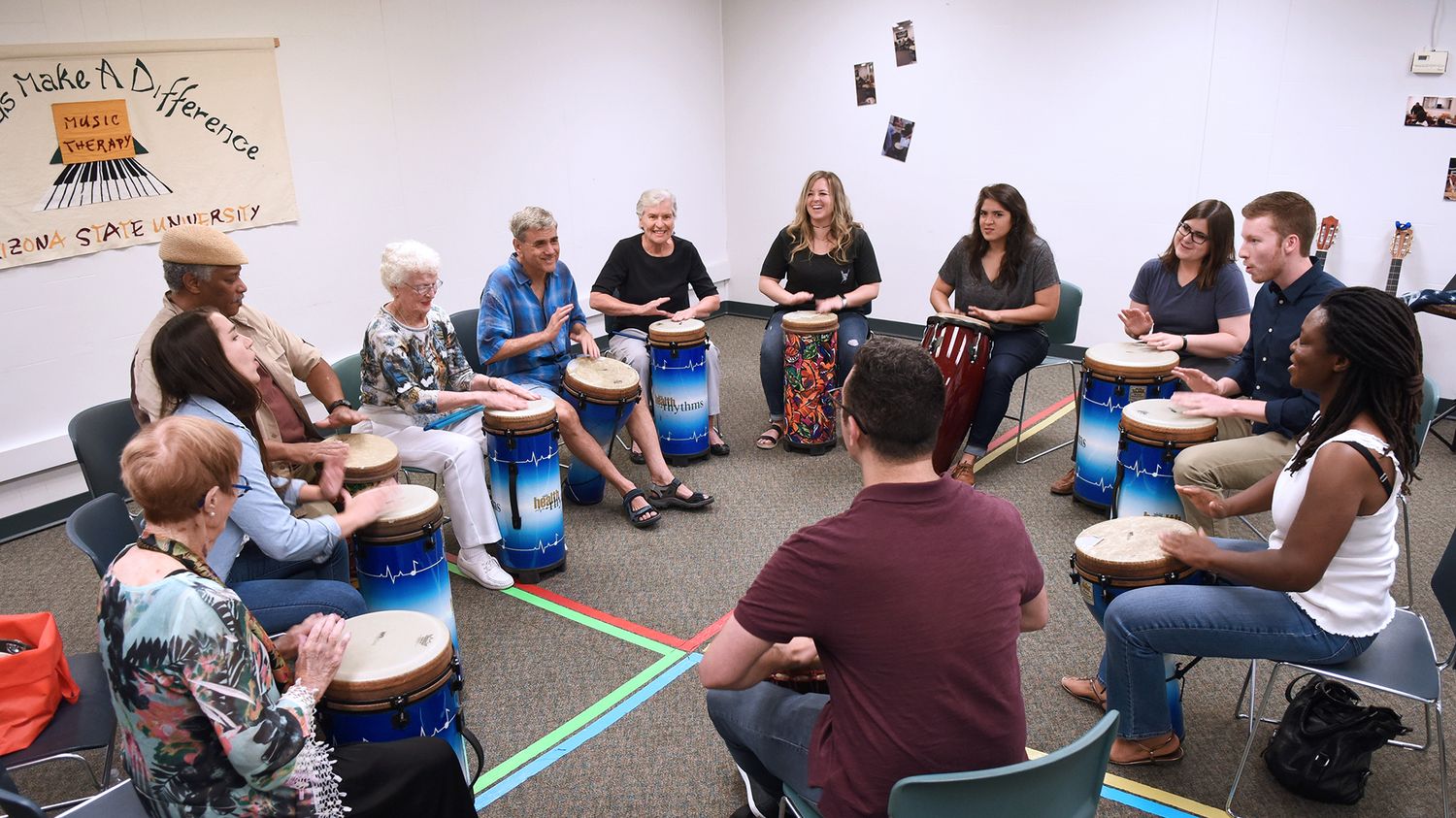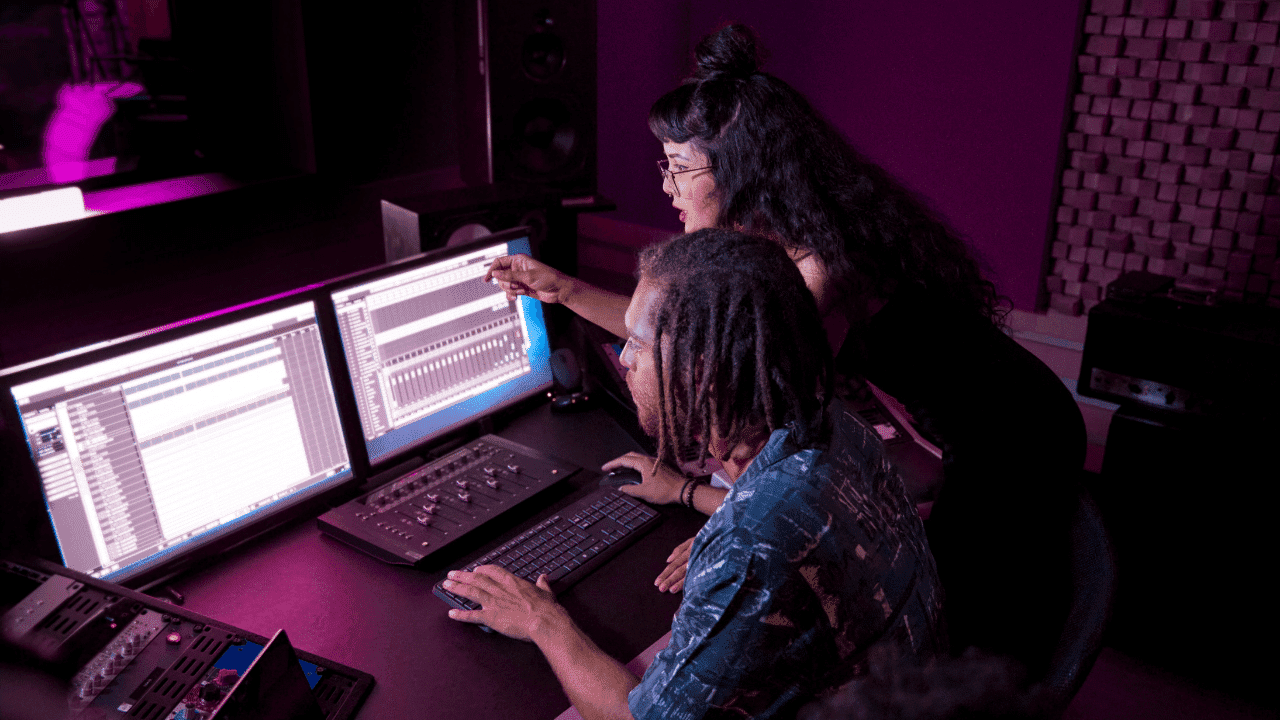Home>Production & Technology>Music Theory>Music Theory What Do You Call Musical Devices


Music Theory
Music Theory What Do You Call Musical Devices
Published: January 31, 2024
Learn about the different musical devices used in music theory. Explore the terminology and definitions of musical instruments, scales, chords, and more in this comprehensive guide to music theory.
(Many of the links in this article redirect to a specific reviewed product. Your purchase of these products through affiliate links helps to generate commission for AudioLover.com, at no extra cost. Learn more)
Table of Contents
Introduction
Welcome to the fascinating world of music theory! Music theory is the study of how music works, the underlying principles and concepts that govern the creation and understanding of music. It explores the elements that make up music, such as rhythm, melody, harmony, and structure, and provides a framework for analyzing and interpreting musical compositions.
When discussing music theory, one important aspect to explore is the concept of musical devices. Musical devices are techniques and strategies that composers and musicians use to create interest, convey emotion, and add complexity to their compositions. These devices are like tools in a musician’s toolbox, offering different ways to manipulate musical elements and engage listeners.
In this article, we will delve into the world of musical devices, exploring their definitions, types, and examples. Whether you’re a music enthusiast, a student, or a professional musician, this article will provide you with valuable insights into the diverse range of musical devices used in various genres and styles.
By understanding musical devices, you can develop a deeper appreciation for the intricacies of music and enhance your own musical skills. So, let’s dive in and unravel the secrets of these captivating devices that make music truly extraordinary!
Definition of Musical Devices
Musical devices, also known as musical techniques or musical elements, are the tools and strategies used by composers and musicians to manipulate the music’s various components and create artistic expression. These devices can be employed in melody, harmony, rhythm, and structure, allowing musicians to construct a rich and engaging musical experience.
Each musical device serves a specific purpose and contributes to the overall aesthetic quality of a composition. They can be used to evoke emotions, create tension and release, add complexity, or highlight specific musical elements. Furthermore, musical devices can be combined and interact with each other to produce unique and innovative musical effects.
While there are countless musical devices, some of the most common ones include repetition, variation, modulation, counterpoint, and ornamentation. Let’s explore each of these musical devices in more detail:
- Repetition: Repetition involves restating a melodic, harmonic, or rhythmic pattern to create a sense of familiarity and continuity in the music. It helps establish a musical theme and allows listeners to connect with and remember the composition.
- Variation: Variation introduces changes to a repetitive musical element, such as altering the rhythm, melody, or harmony. This device adds interest and keeps the music dynamic and engaging. Composers often use variation to develop their musical ideas and captivate the listener’s attention.
- Modulation: Modulation involves changing the key or tonal center of a composition. This device adds excitement and a sense of exploration, as the music shifts to a new tonal landscape. Modulation can create tension and release, enhance emotional expression, and provide a fresh perspective on the musical material.
- Counterpoint: Counterpoint is the art of combining multiple melodic lines that are independent yet harmonically related. It creates intricate, interweaving melodies that interact with each other to produce rich harmonies and textures. Counterpoint is commonly found in classical music and can add complexity and depth to a composition.
- Ornamentation: Ornamentation involves embellishing a melody with additional notes, trills, grace notes, or other decorative elements. This device adds flair and virtuosity to the music and allows the performer to showcase their technical skills and artistic interpretation.
These are just a few examples of the many musical devices at the disposal of composers and musicians. Each device offers a unique way to manipulate musical elements and craft a compelling musical experience. By understanding and utilizing these devices, musicians can create music that resonates with listeners and conveys their artistic vision.
Types of Musical Devices
Musical devices can be categorized into four main types: melodic devices, harmonic devices, rhythmic devices, and structural devices. Each type focuses on a specific aspect of music and contributes to the overall composition in a distinct way. Let’s explore each type in more detail:
Melodic Musical Devices:
Melodic devices pertain to the manipulation of the melody, the sequence of musical notes that form the main theme or central idea of a composition. These devices shape the melodic contour and add interest to the melody. Some common melodic musical devices include:
- Sequence: Sequence involves repeating a melodic pattern at a different pitch, usually higher or lower. This device creates a sense of continuity and development within the melody.
- Augmentation and Diminution: Augmentation refers to elongating the duration of melodic notes, while diminution involves shortening the melodic note values. These devices can alter the pace and mood of the melody.
- Passing Tones: Passing tones are intermediary notes inserted between melodic notes to create smooth and connected melodic lines. They add fluidity and movement to the melody.
- Appogiaturas: Appogiaturas are ornamental notes that create tension by moving from a non-chord tone to a chord tone. They add emotional depth and expressiveness to the melody.
Harmonic Musical Devices:
Harmonic devices focus on the manipulation of harmony, which refers to the vertical arrangement of musical tones, chords, and their relationships. These devices impact the overall tonal quality and progression of a composition. Some common harmonic musical devices include:
- Chord Progressions: Chord progressions are a sequence of chords that create harmonic movement and establish tonal centers. They provide structure and support to the melody and shape the emotional character of a composition.
- Cadences: Cadences are chord progressions that mark the end of a musical phrase or section. They add a sense of resolution and provide a natural resting point in the music.
- Harmonic Substitution: Harmonic substitution involves replacing a chord with another chord that shares similar tonal characteristics. This device adds harmonic interest and can create unexpected twists and turns in the music.
- Modal Interchange: Modal interchange refers to borrowing chords from parallel or related scales. This device introduces harmonic color and can add richness and complexity to the composition.
Rhythmic Musical Devices:
Rhythmic devices revolve around the manipulation of rhythm, the pattern of beats and durations in music. These devices provide a rhythmic foundation and drive the energy and momentum of the composition. Some common rhythmic musical devices include:
- Syncopation: Syncopation involves placing accents on weak beats or offbeats, creating a rhythmic tension and adding an element of surprise and groove to the music.
- Polyrhythm: Polyrhythm occurs when multiple rhythmic patterns with different time signatures are played simultaneously. This device adds complexity and creates a layered rhythmic texture.
- Rhythmic Displacement: Rhythmic displacement involves shifting a rhythmic pattern by a certain duration. This device can create an interesting rhythmic interplay between different sections or instruments.
- Ostinato: Ostinato is a repetitive rhythmic pattern that serves as a constant musical motif. It adds a hypnotic and driving quality to the composition.
Structural Musical Devices:
Structural devices focus on the organization and arrangement of musical elements to create a cohesive and well-structured composition. These devices shape the overall form and narrative of the music. Some common structural musical devices include:
- Repetition and Contrast: Repetition and contrast involve the repetition of musical ideas followed by contrasting sections. This device provides a sense of familiarity and development in the composition.
- Call and Response: Call and response is a musical conversation between two or more musical voices. It involves one voice playing a phrase or idea and another voice responding with a related or contrasting phrase.
- Development: Development refers to the expansion and transformation of musical themes or motifs throughout a composition. It adds depth, complexity, and variation to the music.
- Coda: A coda is a concluding section at the end of a musical piece. It serves as a final resolution or musical statement, wrapping up the composition.
These are just a few examples of the various types of musical devices used in composition and performance. By understanding these different types, musicians can effectively utilize them to create expressive, engaging, and memorable music.
Melodic Musical Devices
Melodic musical devices are techniques used to manipulate the melody, which is the main musical line or theme of a composition. These devices add interest, variety, and emotional depth to the melody, ultimately enhancing the overall musical experience. Let’s explore some common melodic musical devices in more detail:
- Sequence: Sequencing is the repetition of a melodic pattern at a different pitch. By transposing the pattern up or down, composers create a sense of continuity and development within the melody. Sequences can be short, repeating a small melodic fragment, or longer, repeating an entire musical phrase.
- Augmentation and Diminution: Augmentation involves lengthening the duration of melodic notes, while diminution shortens the note values. These devices can alter the pace and mood of the melody. Augmentation adds a sense of expansion and grandeur, while diminution creates a faster, more agile feel.
- Passing Tones: Passing tones, also known as passing or non-chord tones, are intermediary notes that connect two melodic notes. They are usually dissonant and create a smooth, flowing line between the chord tones. Passing tones add fluidity and movement to the melody, making it more interesting and dynamic.
- Appogiaturas: Appogiaturas are ornamental notes that create tension by resolving from a non-chord tone to a chord tone. They are accented and held for a brief moment before resolving to the next note. Appogiaturas add emotional depth and expressiveness to the melody, evoking feelings of longing, anticipation, or sadness.
- Portamento: Portamento, also known as a ‘slide’ or ‘glide,’ is a technique where the pitch smoothly slides from one note to another. It can be done on instruments or through vocal expression. Portamento adds a distinctive and expressive character to the melody, creating a sense of connection and fluidity.
These melodic musical devices are just a few examples of the ways composers and musicians manipulate melodies to create interest and emotional impact. By incorporating these devices into their compositions or performances, musicians can add depth, variety, and creativity to their melodic lines.
Harmonic Musical Devices
Harmonic musical devices are techniques used to manipulate the harmony, which refers to the vertical relationship between musical tones or chords. These devices shape the tonal quality, progression, and overall harmonic structure of a composition. Several common harmonic musical devices include:
- Chord Progressions: Chord progressions are sequences of chords that create harmonic movement and establish tonal centers. They form the foundation of a composition and contribute to its overall structure and mood. Different progressions can evoke various emotions, such as stability, tension, or resolution.
- Cadences: Cadences are chord progressions that provide a sense of resolution and mark the end of a musical phrase or section. They create logical stopping points within the music and often characterize the piece’s finality or continuation. Common cadences include the authentic cadence, plagal cadence, and deceptive cadence.
- Harmonic Substitution: Harmonic substitution involves replacing a chord with another that shares similar tonal characteristics. This technique adds harmonic interest and can create unexpected twists and turns in the music. Substituting chords allows composers to explore alternative harmonic possibilities while maintaining the overall structure and progression.
- Modal Interchange: Modal interchange, also known as borrowed chords, refers to the use of chords from parallel or related scales. For example, borrowing a chord from the parallel minor scale in a major key composition. Modal interchange adds harmonic complexity, color, and emotional depth to a composition.
- Altered Chords: Altered chords are chords with certain notes modified or augmented, creating dissonance and adding tension to the harmony. Common altered chords include augmented and diminished chords, as well as chord extensions and alterations. These chords create a sense of instability and can lead to unexpected chord resolutions.
These harmonic musical devices are just a few examples of the ways musicians manipulate harmony to create interest, tension, and emotional expression in their compositions. By utilizing these devices, composers can shape the harmonic landscape of their music, adding depth, complexity, and unique character to their compositions.
Rhythmic Musical Devices
Rhythmic musical devices are techniques used to manipulate the rhythm, which refers to the pattern of beats and durations in music. These devices provide the rhythmic foundation and drive the energy and momentum of a composition. There are several common rhythmic musical devices:
- Syncopation: Syncopation is the deliberate accentuation of offbeats or weak beats, creating a rhythmic tension and adding an element of surprise and groove to the music. Syncopation can be achieved through various rhythmic techniques, such as emphasizing the upbeat or accenting a normally unaccented note.
- Polyrhythm: Polyrhythm occurs when multiple rhythmic patterns with different time signatures are played simultaneously. This device adds complexity and creates a layered rhythmic texture. Polyrhythms can generate intricate and captivating rhythmic interactions, often found in genres like African and Latin music.
- Rhythmic Displacement: Rhythmic displacement involves shifting a rhythmic pattern by a certain duration. This device can create an interesting rhythmic interplay between different sections or instruments. By shifting the pattern, new rhythmic relationships and grooves can be created, adding a dynamic element to the music.
- Ostinato: Ostinato is a repetitive rhythmic pattern that serves as a constant musical motif. It can be a short melodic phrase or a rhythmic cell played repeatedly throughout the composition. Ostinatos provide a solid foundation and add a hypnotic, driving quality to the music, supporting other melodic or harmonic elements.
- Rhythmic Offsets: Rhythmic offsets involve starting a rhythmic pattern or phrase at a different point within the measure or beat, creating a rhythmic variation. This device adds complexity and interest to the rhythm, introducing subtle variations in the timing of the musical phrases.
These rhythmic musical devices are just a few examples of the ways musicians manipulate rhythm to create interest, energy, and excitement in their compositions. By utilizing these devices, composers and performers can create unique and memorable rhythmic patterns, adding depth and complexity to their music.
Structural Musical Devices
Structural musical devices are techniques used to organize and arrange the various musical elements within a composition. These devices shape the overall form and narrative of the music, providing coherence and guiding the listener through the musical journey. There are several common structural musical devices:
- Repetition and Contrast: Repetition and contrast involve the repetition of musical ideas followed by contrasting sections. Repetition provides a sense of familiarity and reinforces melodic or harmonic motifs, while contrast introduces new elements or develops existing themes. The interplay between repetition and contrast creates a sense of tension and release, adding interest and structure to the music.
- Call and Response: Call and response is a musical conversation between different musical voices. It involves one voice playing a phrase or idea (the “call”), and another voice responding with a related or contrasting phrase (the “response”). Call and response creates a dynamic interaction between musical elements, adding dimension and engagement to the composition.
- Development: Development refers to the expansion and transformation of musical themes or motifs throughout a composition. It involves manipulating melodic, harmonic, or rhythmic elements to create variation, contrast, and progression. Development adds depth, complexity, and interest to the music, allowing ideas to evolve and unfold over time.
- Coda: A coda is a concluding section at the end of a musical piece. It provides a sense of closure, wrapping up the composition and giving a final statement. The coda may recapitulate earlier themes, intensify the emotional impact, or introduce new elements as a grand finale.
- Transition: Transitions are passages that connect different sections or ideas within a composition. They facilitate smooth and seamless progressions, helping to link contrasting sections and maintain coherence. Transitions can include modulations, bridging phrases, or harmonic progressions that guide the listener from one part of the music to the next.
These structural musical devices are just a few examples of the ways composers shape the form and organization of their compositions. By utilizing these devices, musicians can create cohesive and engaging musical structures that captivate listeners and provide a satisfying musical experience.
Examples of Musical Devices
Now that we have explored the different types of musical devices, let’s dive into some specific examples that highlight how these devices are used in practice:
- Repetition in “Für Elise” by Ludwig van Beethoven: Beethoven’s famous piano piece, “Für Elise,” features a memorable melodic motif that is repeated throughout the composition. This repetition creates a sense of familiarity and allows the listener to connect with the piece on a deeper level.
- Variation in Johann Pachelbel’s “Canon in D”: Pachelbel’s “Canon in D” is an excellent example of variation. The piece begins with a simple, repeating chord progression, which is then varied and developed as new voices enter with different melodic lines. This variation adds interest and maintains the listener’s engagement throughout the piece.
- Modulation in “Unchained Melody” by The Righteous Brothers: “Unchained Melody” showcases the use of modulation. As the song progresses, it modulates to different keys, providing a refreshing change and adding emotional impact to the music. Each modulation heightens the intensity and creates a sense of anticipation for what is to come.
- Counterpoint in Johann Sebastian Bach’s “Fugue in D Minor”: Bach’s “Fugue in D Minor” is a prime example of counterpoint. The piece features multiple melodic lines that interact with each other, creating complex harmonies and polyphonic textures. The contrapuntal interplay adds depth and richness to the composition.
- Ornamentation in “Flight of the Bumblebee” by Nikolai Rimsky-Korsakov: “Flight of the Bumblebee” is a virtuosic piece that showcases ornamentation. The fast-paced, intricate melody is embellished with trills, grace notes, and rapid scale passages. This ornamentation adds flair, technical intricacy, and showcases the performer’s skill.
These examples represent just a fraction of the countless musical devices used in various genres and styles. From classical to pop, jazz to rock, the use of these devices demonstrates the creativity and versatility of musicians and composers throughout history.
By studying and appreciating these examples, aspiring musicians gain a deeper understanding of how musical devices contribute to the structure, expression, and impact of music. These devices provide the building blocks for composition, improvisation, and performance, bringing music to life.
Conclusion
Music theory is a captivating and essential aspect of understanding and creating music. Within the realm of music theory, musical devices play a crucial role in shaping the overall composition, adding complexity, interest, and emotional depth to the music. Whether through melodic, harmonic, rhythmic, or structural devices, musicians and composers have a wide range of tools at their disposal to craft captivating and memorable pieces.
Throughout this article, we have explored the definitions, types, and examples of musical devices. We’ve seen how repetition and variation can create familiarity and development in a melody, how harmonic progressions and modulations shape the tonal landscape, how rhythms can be manipulated to create tension and groove, and how structural devices like repetition, contrast, and development provide a cohesive and engaging musical journey.
By understanding and utilizing these musical devices, musicians can enhance their compositions, performances, and interpretations. These devices serve as the building blocks of creativity, allowing artists to express their emotions, captivate listeners, and leave a lasting impression.
Whether you’re a music enthusiast, a student, or a professional musician, exploring musical devices and incorporating them into your musical endeavors can greatly enrich your understanding and appreciation of music. So, take the concepts discussed in this article and let your creativity soar. Experiment with different devices, explore new combinations, and discover your unique artistic voice.
Remember, music theory provides a framework, but it is through the application of musical devices that true artistry emerges. Embrace the power of these devices, and let the magic of music unfold.

